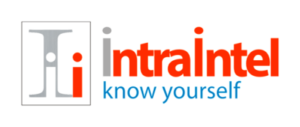You’ve probably heard it in a meeting, on a webinar, or from an L&D vendor pitching the next big thing:
“We embed learning into the workflow.”
Sounds slick. Sounds smart.
But let’s be honest – what does that actually mean?
More importantly:
Is it just another corporate buzzword, or is it the breakthrough modern learning strategies have been waiting for?
If you’ve been wondering whether “learning in the flow of work” is hype or real, this blog will unpack the concept – and show you how to move from theory to action.
- Why Traditional Learning Is Falling Short
Let’s start with the problem.
Most workplace learning still happens outside of work:
- Long eLearning modules in a separate LMS
- All-day workshops that pull employees away from their tasks
- Generic video libraries that sit untouched until mandatory season
The result?
Disruption. Disconnection. Disengagement.
Employees are overwhelmed with content they don’t remember, don’t apply, and don’t see the point of.
In fast-paced roles, learners can’t afford to pause work for training. They need answers, not just access.
- What “Embedding Learning into Workflows” Actually Means
Let’s cut through the fluff.
To embed learning into the workflow means to deliver learning at the moment of need, within the tools and environments people already use.
Think:
- A sales rep getting a pitch tip inside the CRM as they prep for a call
- A project manager receiving a just-in-time checklist in Microsoft Teams
- A customer support agent accessing a 1-minute refresher video within the ticketing system
It’s not about building new content – it’s about putting the right knowledge in the right place at the right time.
And that’s the magic.
- Buzzword? Only If You Miss the Point
The phrase becomes a buzzword when it’s used to describe surface-level changes.
Dropping a link to an LMS in Slack?
Not embedded learning.
Pushing a “course of the day” alert with no context?
Still not embedded.
To qualify as truly embedded learning, it must be:
- Contextual – relevant to the task at hand
- Seamless – no extra logins, windows, or friction
- Actionable – helps the learner solve a problem, make a decision, or improve an outcome
- Timely – delivered when it’s needed most
Do that – and it’s a breakthrough.
- Why It Works (And Why Learners Love It)
Embedded learning solves the #1 problem in corporate L&D: application.
Instead of passively consuming content and hoping to recall it later, employees learn as they work. This drives:
- Higher retention
- Faster skill development
- Greater learner satisfaction
- Reduced time away from work
It’s learning with purpose, not just content for content’s sake.
And here’s a bonus: managers love it too, because it helps their teams perform better without slowing down.
- How to Embed Learning Into Your Workflows (Without Breaking Everything)
You don’t need to rebuild your systems or buy a fancy new platform. Start with these steps:
– Audit your tools. Where do employees spend most of their time? Outlook? Salesforce? Teams? Zoom?
– Map learning to moments. Identify high-friction tasks where quick learning would help: writing emails, handling objections, completing forms.
– Use microlearning. Create or curate short, targeted content that fits into 1–3 minute timeframes.
– Use integrations. Tools like Whatfix, Spekit, Zavvy, and even AI chatbots can deliver contextual help inside existing apps.
– Make it searchable. Build a knowledge base that’s Google-fast and works inside core systems.
Final Thought
“Embedding learning into workflows” isn’t just a catchphrase – it’s a signal that the future of learning is shifting.
It’s not about pulling people away from work to learn – it’s about helping them learn to work better, right where they are.
So is it a buzzword?
Only if you leave it on a slide deck.
Otherwise – it’s the breakthrough your learners have been waiting for.
————————————————————————————
Want help identifying workflow learning opportunities in your org? Let’s chat – I’ll walk you through a practical audit template you can start using tomorrow.


Great post! It’s always refreshing to see content that dives deep into practical strategies. For those looking to spark new AI-driven ventures, the AI Business Ideas Generator is a must-try. Insightful and actionable!